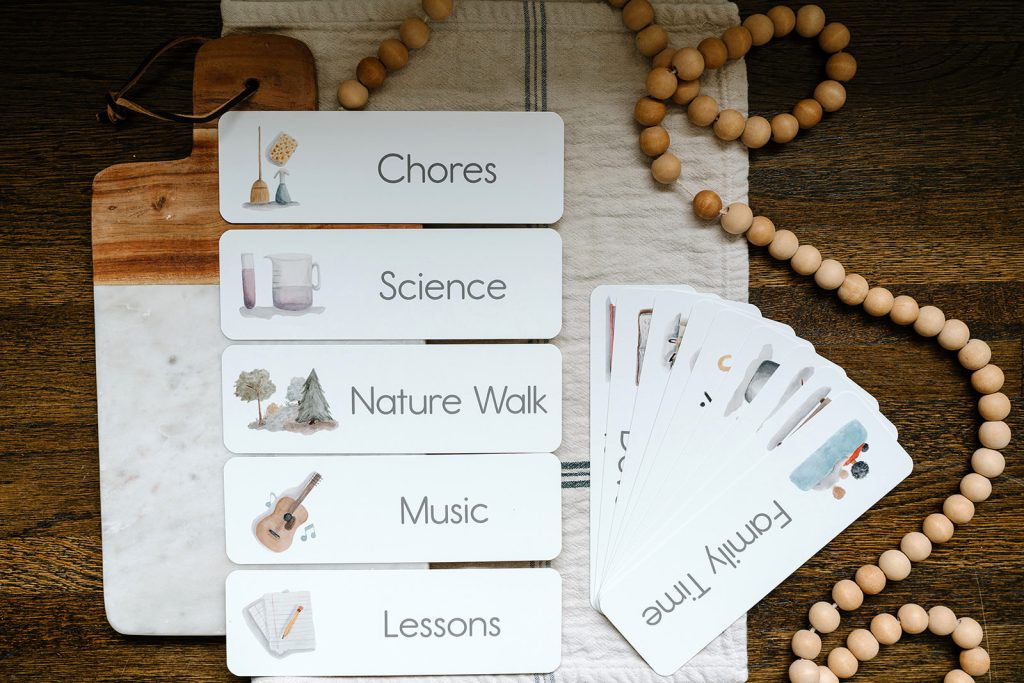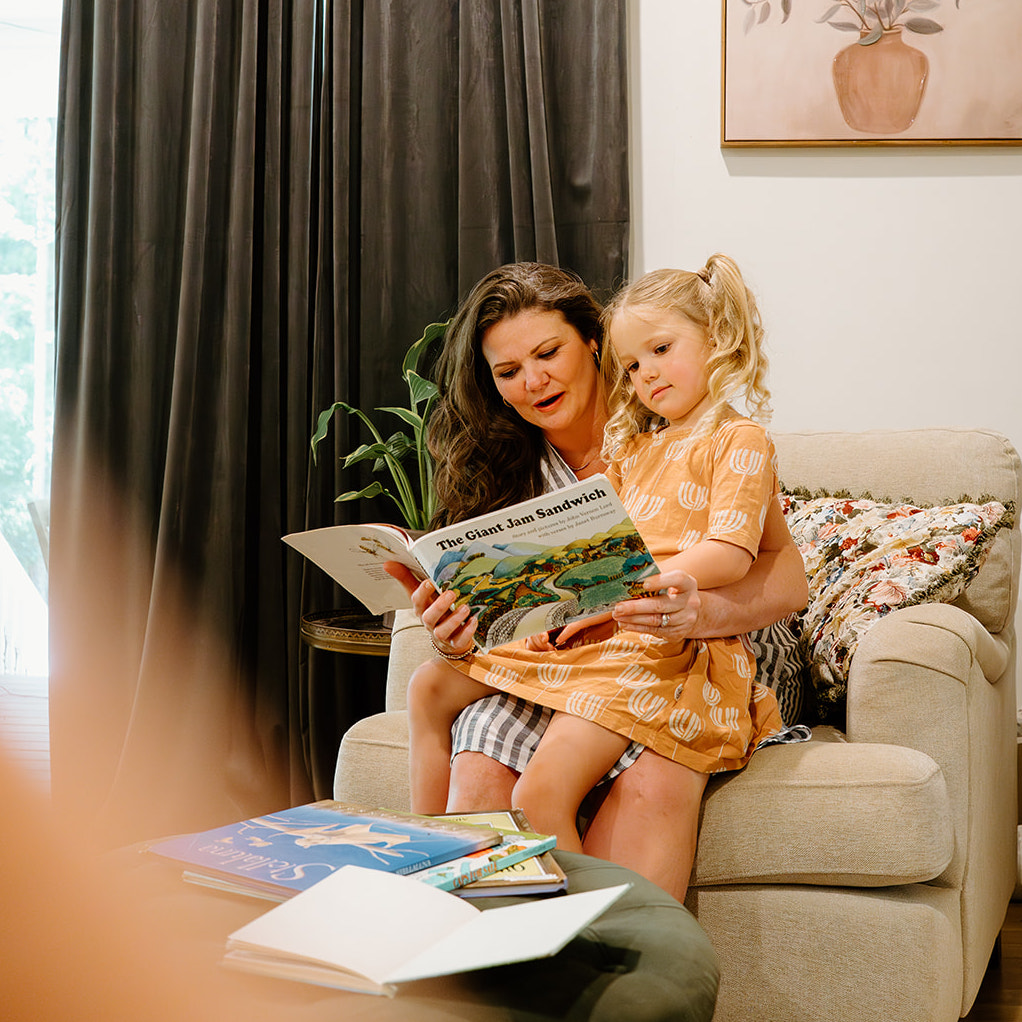
Teaching your child to read sounds daunting and I have heard many parents say it’s the main fear they have in considering homeschooling. While I know there are exceptions, I am here to say that for the majority of children, it really is much simpler than you would expect. Take a deep breath, spread the feast of good living books and resources, and invite your child into the beauty. You will be amazed at how they will lead the way.
In this blog post I share how my oldest children learned to read and my favorite resources for encouraging children to learn how to read.
In this blog post:
- Our story of how my oldest two children learned to read
- Principles to consider when teaching a child to read
- Favorite resources for encouraging a child to learn to read
- Favorite homeschool preschool learning resources from Treehouse Schoolhouse
Our story of how my oldest two children learned to read

When my oldest son was a toddler, we started immersing him in books. Having baskets of books in every room and reaching for those over the television remote was the culture of our home.
My son was diagnosed with hearing loss and sensory processing issues around 2 years old and had zero – and I mean zero – interest in books around that age. He wouldn’t sit on my lap for longer than one page, and I cried multiple times leaving the library because he had absolutely no interest in storytime and was a disruption. I wondered if he would ever pick up and enjoy a book on his own.
Now, at age 7, we literally can’t keep books out of his hands. He devours any book in sight and will tell you his hobby is reading. He wants to be an author (and a narrator of audiobooks) when he grows up. So what happened? I honestly can’t tell you exactly what changed. I didn’t even teach him to read. Did I play a role? Absolutely. But it’s not what you may imagine. Looking back, all I can say is I did was create an atmosphere and invite him into it.
I pursued the best living book lists I could find and made it a priority to read to him as much as possible. We made the library an important part of our week. I purchased a CD player and Read Along Books on CD for him to follow along in the physical books while he listened. Around 3 years old, he started following along in the books with his finger as I read or as he listened to an audiobook. He started picking up books without me and “reading” them. I honestly don’t know when it happened, but somewhere around age 3 and a half, we were driving down the road and he said, “Mama, what is Toys… R… Us?” He had looked out the window and read the sign. I was beside myself. When we got home, I pulled out a new early reader book and sat down with him, and sure enough, the child could read! He never had a stumbling-through and sounding-out phase.
By 3 years and 8 months I got him the Frog and Toad Storybook Collection, and he read it fluently. I know that’s not every child’s story. As a matter of fact, it wasn’t my daughter’s, even though she grew up in the same culture.
My daughter loved being read to and listening to audiobooks as much as her big brother, but her motivation to learn on her own wasn’t as strong until around 4 and a half years old. She started mentioning wanting to read like her brother, so even though we didn’t do anything formal, I decided to start gently inviting her into learning. If she didn’t show any interest, I would’ve waited until closer to age 6. Although I used more resources with my daughter than with my son that were intended to “teach” her to read, I still can’t say that I did the teaching and she did the learning. She taught herself. I was merely the one creating the atmosphere and welcoming her in. It wasn’t forced and there was no pressure. I wanted her to read when she was ready and had a desire. I wanted her to take the lead and take ownership of it.
Principles to consider when teaching a child to read

I love this article from Psychology Today about children teaching themselves to read. While I don’t consider us an unschooling family, I agree with this article on many levels.
This explains these seven principles about children teaching themselves how to read.
- For non-schooled children, there is no critical period or best age for learning to read.
- Motivated children can go from apparent non-reading to fluent reading very quickly.
- Attempts to push reading can backfire.
- Children learn to read when reading becomes, to them, a means to some valued end or ends.
- Reading, like many other skills, is learned socially through shared participation.
- Some children become interested in writing before reading, and they learn to read as they learn to write.
- There is no predictable “course” through which children learn to read.
I believe that instead of stressing out and asking the question, “How can I teach my child to read?” we should be asking, “How can I draw my child into the beauty and fullness of life that reading will give them?” and “How can I best set up their atmosphere so that they might desire to become an avid reader?”
Don’t fall into the trap of comparing–trust the process, and watch your child fall in love with reading on their own timeline.
Favorite resources for encouraging a child to learn to read
Now that my 4-year-old is ready to learn to read, I can’t believe it’s time to introduce our favorite resources again! While we won’t use all of these this time, here are some of the top resources we have used and loved in teaching children to read.
Hands-On Letter Recognition and Formation Activities

I love using multiple hands-on strategies to introduce letter names and sounds during the preschool years. We usually focus on one letter each week and use multiple activities to get them familiar with the letter in a fun way. We often do this with the Wonder of Nature Alphabet Cards and Alphabet Sheets. These are my favorite tools for gently encouraging children to learn the letters of the alphabet in a hands-on and engaging way.
Treehouse Story School: Preschool

Treehouse Story School: Preschool gently introduces each letter of the alphabet in the context of reading a coordinating children’s picture book. Introduce the alphabet while you connect with your child and instill a love of literature in your home. It also includes hand rhymes, hands-on activities, life skills, and so much more!
ABC See Hear Do
ABC See Hear Do is a simple little book that is so much fun for teaching the sounds of each letter in the alphabet. Each letter is given an animal and motion to help children remember which letter matches which sound. I taught one letter at a time and its correlating sound, animal, and movement as we went through the alphabet.
Three-Part Cards

I first discovered 3-Part Cards when researching the Montessori method of schooling. The official name for these cards are “Nomenclature Cards” coming from the Latin word nomenclatura, which means “assigning of names.” They are basically an image with a corresponding label. They come in a whole form and in a split form. The whole cards include the word and image together on one card. The split cards separate the word from the image. This provides endless opportunities for matching and word recognition. I created these 3-Part Cards for every letter of the alphabet, and as we focused on each letter, I would offer the corresponding cards to my daughter to play with. I was always amazed at how she could decode even the most difficult words to read.
Dash Into Learning Early Reading Program

I can’t say enough about this beautiful early reading program. Dash into Learning is a complete early reading program that is so simple and fun to use. Both of my children fell in love with the charming illustrations and activity packs that correlate with the early readers in the program. Each book has a short open-and-go lesson in the beginning and then the child proceeds to read the story with confidence. The skills build on each other as the child progresses through the books. Activities like paper dolls, finger puppets, board games, and sticker charts that come with the program really engaged my children and helped my daughter retain the information.
Favorite homeschool preschool learning resources from Treehouse Schoolhouse
Treehouse Story School: Preschool

Treehouse Story School: Preschool is 32-weeks of gentle, literature-based curriculum designed for ages 2.5-5 years. This preschool curriculum that invites children to learn through the themes in stories they love. Each week will focus on a picture book, inviting children into connection and learning through music and movement, play-based narration, alphabet and number play, motor skills, practical life development, crafts, and baking together.
It would be a great fit for your toddler or preschooler if you are looking to incorporate multi-sensory, play-based learning while introducing them to timeless stories.
From toddler through upper preschool, this curriculum can be used year after year as you dive deeper into beloved, classic stories your family will cherish. Preview a free week here.
Daily Rhythm Bundle

Children are highly visual–they can feel particularly out of control when they don’t know what to expect of their day. That’s why we recommend using a visual schedule to support your children from the time they are very young.
Rather than trying to stick to a rigid schedule, this set helps you create a general rhythm for your days. The daily rhythm worksheet is laminated and dry erase and the cards can be moved around offering you flexibility and adaptability.
Morning Time Bundle

This interactive, reusable set focuses on weather, seasons, moon phase, temperature, weather-appropriate clothing, date and time, and reading a calendar. With this daily bundle, your child will practice the skills of handwriting, tracing, copywork, and telling time. I recommend you print these materials and place them inside of a Morning Time Menu or dry-erase sleeve. Using dry-erase markers, your child can fill this bundle out over and over again.
We also offer a version of the Morning Time Bundle for those in our community who live in the Southern Hemisphere.



